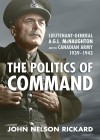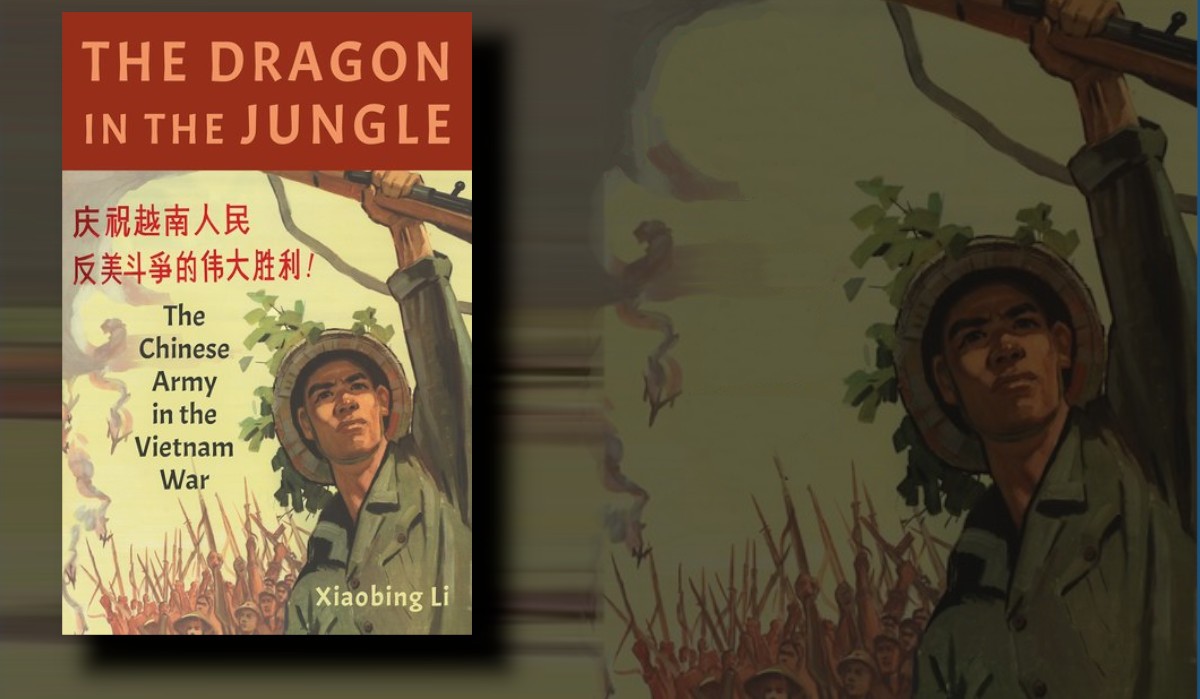Lieutenant-General A.G.L. McNaughton and the Canadian Army, 1939-1943
University of Toronto Press, Toronto, 2011, 416 pp
2021 Paperback Reprint ISBN: 1487541023
Author: John Nelson Rickard
Reviewed By: Jordan Beavis
Few figures within Canadian military history are as divisive as Lieutenant-General Andrew ‘Andy’ McNaughton. Differing interpretations of his personality, career, and abilities abound.[1] Yet a wide breath of historians are able to agree on one fact – that his replacement as Commander of the First Canadian Army in 1943 in Britain was, and remains, a controversial part of Canada’s World War II history. Bereft of support from key Canadian war leaders, and subordinate to a coterie of British generals who had no confidence in his command abilities, McNaughton’s career is one that many within the Australian Army’s and ADF’s highest ranks would do well to know as a cautionary tale.
Originally published in 2010 but re-released in a paperback edition in 2021, John Nelson Rickard’s The Politics of Command delves deeply into the World War II career of McNaughton. Using a wide array of primary and secondary sources, Rickard proposes a re-evaluation of McNaughton’s command of the Canadian Army in Britain. McNaughton, a ‘gifted soldier-scientist’, has been accused of several shortcomings. These include his refusal to subdivide Canadian formations for use in operations in favour of leading them into battle himself, as well as perceptions that he was a poor military trainer and operational commander, and that his ‘abrasive personality’ undermined his ability to work with key British and Canadian colleagues and Canadian war leaders.[2] Such critiques hold ‘some basic validity’, but are simplistic and not reflected in the documentary record.[3] The Politics of Command, therefore, exposes the complex context behind such accusations and offers a more balanced assessment.
Part One of The Politics of Command comprises an overview of McNaughton’s life and military career to 1940. Commissioned into the Canadian Active Militia in 1909 while studying at university, by the outbreak of World War I in 1914 he had completed a Masters of Science and was a Major commanding an artillery battery in Montreal. Mobilised as part of the First Contingent of the Canadian Expeditionary Force, McNaughton gave exemplary service throughout the conflict as a battery commander, artillery brigade commander, and then in a number of staff posts in Canadian Corps Headquarters.[4] By the time of the Armistice in November 1918, he had reached the rank of Brigadier-General and he elected to transfer to the Permanent Active Militia. In the interwar period, he rose swiftly to become the Chief of the General Staff (CGS) (professional head of the Canadian military forces) for the period 1929-1935, where after he retired from military life to lead the National Research Council of Canada. In September 1939, McNaughton was selected by Canadian Prime Minister William Lyon Mackenzie King to command the newly raised 1st Canadian Infantry Division and lead it overseas.
Parts Two, Three, and Four of Rickard’s book offer the bulk of his analysis and cover the period 1940-1943. Part Two delves into the difficulties experienced by McNaughton in getting his Canadian troops – first a division, then a corps, and finally an army – into battle. As late as 1943 (albeit with the exception of the disastrous Dieppe raid and the hard-fought but ultimately unsuccessful defence of Hong Kong), Canadian troops had not yet faced battle. This was not solely due to McNaughton. While McNaughton did insist that Canadians enter battle in divisional formations and not be broken up to be used piecemeal by British commanders, a confluence of other factors were also at play. Mackenzie King, for example, worked to prevent significant deployments of Canadians into battle due to his fear that casualties could cause a political crisis over the enactment of conscription. Additionally, from 1940-42 Canadian units purposely remained in Britain for the defence of the Isles against a German invasion. A potential deployment to North Africa or the Middle East for ongoing operations was also neither offered nor sought by war leaders, and there was no operational requirement for such reinforcement (materiel and logistic limitations were the principal impediment to operations).[5] A lack of feasible alternate operations had pushed McNaughton into supporting Canadian involvement in the Dieppe raid. Indeed, McNaughton publically and privately advocated for the Canadians to enter battle. He remarked to the press in early 1943 that the Canadian army was “available, in whole or in part, for operations anywhere”, yet the British War Office and Chiefs of Staff “continued to plan operations without the Canadians in mind”.[6]
While McNaughton actively sought options for a feasible deployment of Canadian troops, his force continued to expand and train for future operations, perhaps even on the continent. Part Three, therefore, takes a step back to review McNaughton’s capabilities as a commander and trainer. McNaughton was ill suited to train his immediate subordinates as he evinced a lifelong disinterest in professional military study and mastery.[7] More generally, however, during the period 1940-44 the training of the Canadian Army was also hampered by:
[w]idespread equipment shortages, a lack of skilled commanders and staff officers, the spatial limitations of training areas in Britain, the lack of opportunity for large-scale exercises, commitment to various operations, a defensive mindset until 1942, an unrefined offensive doctrine thereafter, and a rapidly expanding Canadian army resulting in the consistent dilution of staff and command talent.[8]
As Rickard illustrates, such factors would have been nigh on impossible for any individual alone to surmount. McNaughton himself was indicative of a general lack of experience in the Canadian forces. Although he had experience in World War I commanding an artillery brigade, during the interwar period he “showed almost no interest in mastering the art and science of command at a level beyond that”.[9] Appointed Commander of the 1st Canadian Infantry Division in September 1939, by July 1940 he was a Corps Commander and, in April 1942, he took command of the new Canadian First Army. This rapid promotion placed McNaughton well outside his experience as a potential operational commander, while his lack of experience in the levels of command of his direct subordinates militated against his ability to train them for their roles. As Rickard demonstrates, however, McNaughton was not alone in being rapidly over-promoted; this occurred at all levels within the expanding Canadian forces into an Army, adversely affecting its performance on exercises.
The climax of McNaughton’s military career, and the deterioration of his standing with the Minister for National Defence (J.L. Ralston) and a number of British generals (notably General Bernard Law Montgomery and his superiors Generals Alan Brooke and Bernard Paget), is the focus of Part Four. Throughout 1943 Brooke and Paget gradually lost confidence in McNaughton’s abilities as an operational commander, particularly in light of his defeat during Exercise Spartan in March. Brooke’s machinations to remove McNaughton are particularly unbecoming; not only did he neglect to engage with McNaughton on his failings as a commander, he also actively schemed for his removal and undermined his standing with Ralston and Canadian CGS Lieutenant-General Kenneth Stuart. Such poor relationships were a symptom of deficiencies within McNaughton’s personality, namely an abrasiveness, inflexibility, a lack of diplomatic skills, and a quickness to form judgements.[10] While not disputing these faults, Rickard does rebalance the narrative by cataloguing the additional factors at play in these relationships, highlighting how these individuals often “talked past one another… thereby aggravating problems where a friendlier discourse would have yielded positive results”.[11] Rickard does admit however that “personality was the most important factor in McNaughton’s ultimate failure as Commander of First Canadian Army”.[12]
Exhaustively researched and meticulously argued, Rickard’s The Politics of Command provides a cautionary tale. It is a book that should be read by all senior levels of the Australian Defence Force. While McNaughton’s career suffered from a confluence of external factors, fault does also lie with him for not rectifying the issues within his control (his personality, his skills as a commander, his inclination against lifelong study) that ultimately led to his removal as Command of the First Canadian Army. The book therefore rebalances our understanding of McNaughton in this critical period, while simultaneously offering insight into concepts such as mobilisation, civil-military relations, the profession of arms, and the importance of understanding the politics of one’s position.
Endnotes
[1] See, for example, J.L. Granatstein, The Weight of Command: Voices of Canada’s Second World War Generals and Those Who Knew Them (Vancouver: University of British Columbia Press, 2016); John Swettenham, McNaughton (3 Volumes) (Toronto: Ryerson, 1968); and Charles P. Stacey, ‘Canadian leaders of the Second World War,’ Canadian Historical Review 66, no. 1 (1985): 64-72.
[2] John Nelson Rickard, The Politics of Command: Lieutenant-General A.G.L. McNaughton and the Canadian Army, 1939-1943 (Toronto: University of Toronto Press, 2021), 1, 4.
[3] Rickard, The Politics of Command, 7.
[4] Rickard, The Politics of Command, 14-22.
[5] Rickard, The Politics of Command, 52-3.
[6] Rickard, The Politics of Command, 73.
[7] Rickard, The Politics of Command, 30-32.
[8] Rickard, The Politics of Command, 221.
[9] Rickard, The Politics of Command, 30.
[10] Rickard, The Politics of Command, 5.
[11] Rickard, The Politics of Command, 228.
[12] Rickard, The Politics of Command, 228.




